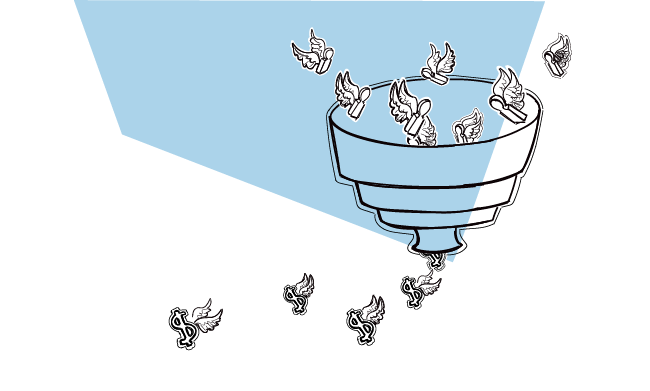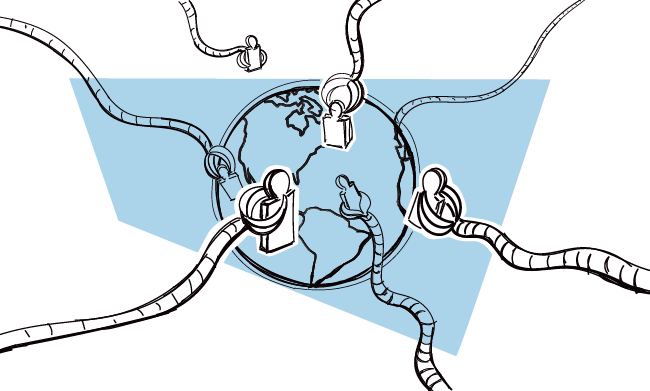We’ve stated many times on this blog that when it comes to cold emailing one solution does not fit all. Especially when you contact prospects from various parts of the world. The approach to cold emails differs slightly from country to country. In order not to commit a cold email faux pas, you should make yourself familiar with an email etiquette of the country you target.
Check what nuances you should pay attention to before running your first international cold email campaign.
Be aware of your prospect’s local culture
The first question that comes to mind when thinking about generating international B2B leads is whether to send a campaign in English or in the local language. To decide on that, you should first find out how comfortable your target prospects are with communicating in English. Quite often people know it well enough to understand your message, but don’t feel confident enough to write or speak in English.
In some cases, the language may turn out to be a barrier in international lead generation. To overcome it, you may want to try sending a campaign in your prospects’ mother tongue. It would be best if you could maintain the communication in that language at every stage of their customer journey, though. Switching from one language to another may confuse them. Keep that in mind while planning your international campaign.
The next thing worth considering is whether to stick to a formal language or be more casual in your communication. In some countries, like Germany for instance, there’s a strong preference to keep a formal tone in B2B relations. It’s rather preferred to use a title and last name over the first name in greetings.
On the contrary, in the US and UK, it’s more common to use rather informal, casual language even in a business environment. If you’re not sure about the tone of your message and don’t want to commit a cold email faux pas, my advice is to keep the tone rather neutral. At least until you receive a reply which will give you a hint on how to adjust the tone further on.
When targeting international leads, try to be inclusive in your email copy. Avoid words that may put people off, like vulgarisms. If you decide to write in English, be careful with idioms and slang words. Non-English speakers may not be familiar with them.
But also take organizational culture into consideration
Whether to use formal or informal tone depends not only on the country you target but also on the business type and industry your prospects belong to. In general, big companies or corporations tend to use more formal language than small businesses or startups. The formal tone is also more characteristic for some specific industries, such as finance or real estate. So even if you target startups, but they operate in the real estate niche, consider if your language is not too casual and avoid using internet memes.
Speaking of memes and gifs… My take on them is to be careful with using them in cold emails. Firstly, because not everybody finds them amusing. Secondly, because visuals embedded in your email copy may harm your deliverability rate. Some email providers block displaying images by default. Pictures or gifs in emails may also trigger SPAM filters because putting an image inside an email has been a well-known spammy tactic.
Find out more about the risk of embedding images into email copy:
What is the Risk of Embedding an Image/Video into B2B Email?
What about emojis? It seems they conquered the internet and our daily conversations. They are also quite common in B2C communication. In B2B, however, whether to use emojis or not depends, again, on the country, industry and company type you target. The criteria is the same as in the case of choosing the level of language formality. Small, young companies, startups will be ok with a smiley or two. But don’t get carried away. Too many emojis will simply make you look less professional, and thus less reliable.
Mind various “email customs” across the world
Every country has its customs – also, “email customs”. One of them concerns the number and frequency of follow-ups.
Prospects from various countries have different attitudes towards follow-ups. In some cases, like the US for example, follow-ups are rooted in the business culture. Following up even a couple of times seems a natural step when there’s no reply to a previous message. Since cold emailing is quite common there, they are used to being contacted by strangers.
On the contrary, in France or Germany, following up one or two times in weekly intervals seems like a safe border between being persistent and coming out pesky. Prospects from these countries receive less cold emails, so when they receive too many, they may think you’re a spammer.
Another thing worth analyzing before running your first international cold email campaign is its schedule. Mind the time difference. Send your message in a prospect’s timezone if possible, so they will receive it at their 9 a.m., not yours. Don’t forget that a quick reaction to your prospect’s response is crucial in outbound sales. Don’t make your prospects wait and try choosing the time that suits both you and them. Also, always check if your campaign isn’t scheduled for their holidays!
Stay compliant with local law
There are various policies concerning email outreach across the world. You might have heard of GDPR, CAN-SPAM Act and CCPA. Some countries also have their own local laws that regulate email sending. All these policies share some basic requirements that you should stick to in order to make your cold email outreach professional.
In a nutshell, you should:
- Give your prospects a way to opt-out from getting your emails;
- Make it easy to identify you, so a professional-looking email signature with your contact credentials is a must;
- State a reason why you reach out to them;
- Be clear about the nature of your message, so if your message is for commercial purposes, you’re required to put that in your email copy;
- Avoid clickbait subject lines;
These are the basic requirements, which I believe are the most useful for international cold email outreach. However, if you wish to go deeper into the topic, read the following posts on our blog:
- Quick Legal Guide to Email Outreach: 6 Rules to Follow
- GDPR – General Data Protection Regulation Practical Guide for Email Senders
- GDPR – Frequently Asked Questions (Updated)
- GDPR After Brexit: How It May Affect Cold Email?
- Do You Prospect in California? Here’s the Newest Privacy Act Recap
Back to you
Before you run your first international outbound campaign, take your time to research your prospects: learn more about their local and organizational culture, so you avoid making a blunder and burning your opportunities. Get yourself familiarized with applicable laws that regulate email sending in the country you target, so your outreach is professional and effective.
Do you have any tips concerning international B2B lead generation you would like to share?
READ ALSO

27 Tools & Services for Outbound Sales Prospecting (2022 Updated)
Prospect list building is a crucial part of the outbound sales process. The first step is defining your ideal customer profile (ICP). But as soon as you've done that, you actually need to find the right accounts, people and their contact details. Here's a tool stack for step two. A collection of outbound prospect list building tools and services that will help you regularly feed Woodpecker with fresh contacts.

5 Tips for Effective Sales Prospecting in 2020
Looking for ideas to level up your prospecting game in 2020? Here you are -- I put together a list of 5 sales prospecting tips worth implementing into your lead generation strategy this year and onwards since I believe they are pretty much everlasting. Get yourself a nice cup of coffee and read on.

How to Effectively Manage a Sales Pipeline to Grow Your Customer Base?
A few weeks ago I wrote about how to build an outbound sales pipeline . However, creating a sales pipeline is only one side of a coin. The other one is to manage it effectively, so your customer base keeps growing. The first step to manage your sales pipeline more effectively is to analyze sales reports. A look at your sales stats should give you a hint on where to start. Here’s how you can identify and fix the cracks in your pipeline or remove any possible clogs.

